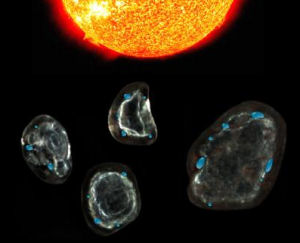
Scientists have discovered that when tiny interplanetary dust particles are battered by the solar wind, the ion bombardment can free oxygen and hydrogen atoms from the dust, creating water molecules that can nurture microscopic life in space.
The discovery, detailed in Proceedings of the National Academy of Sciences, was made by researchers from the University of Hawaii, Lawrence Livermore National Laboratory, Lawrence Berkeley National Laboratory, and the University of California – Berkeley. The study suggests that these interplanetary dust particles (IDPs) could deliver water and organics to the Earth and other planets.
It has been known for decades that the solar wind causes the chemical makeup of IDPs to change. The idea that solar wind irradiation might also produce water had been mooted, but remained only a theory. The reason for this uncertainty? The amount of water produced is small and localized in very thin rims on the surfaces of the particles so that older analytical techniques were unable to confirm the presence of water.
In the new research, the scientists used a transmission electron microscope to detect water in the space-weathered rims on silicate minerals in IDPs. They were able to conclude that the water forms from the interaction of solar wind hydrogen ions (H ) with oxygen in the silicate mineral grains.
“It is a thrilling possibility that this influx of dust has acted as a continuous rainfall of little reaction vessels containing both the water and organics needed for the eventual origin of life on Earth and possibly Mars,” said Hope Ishii, from the University of Hawaii. He adds that this mechanism of delivering both water and organics simultaneously is likely to be in effect in other solar systems. “These raw ingredients of dust and hydrogen ions from their parent star would allow the process to happen in almost any planetary system.”
The implications of the new work are fascinating. Airless bodies in space such as asteroids and the Moon, with ubiquitous silicate minerals, are constantly being exposed to solar wind irradiation. The researchers think this new mechanism of water formation could help explain previously detected water on the Moon, and could possibly explain the source of water ice in permanently shadowed regions of the Moon.
In future work, the scientists plan to estimate the water quantity delivered to Earth by IDPs. They will also explore in more detail what organic and inorganic materials may be present in the water.
Related:
Discuss this article in our forum
Hubble spots water on distant exoplanets
Water vapor seen gushing from Europa
Water discovered in remnants of destroyed exoplanet
More evidence for asteroids creating life on Earth



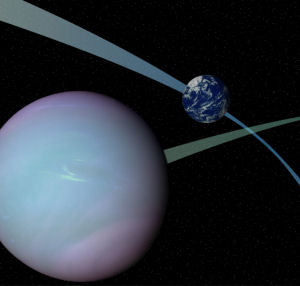
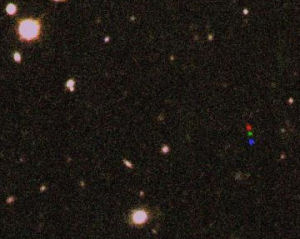

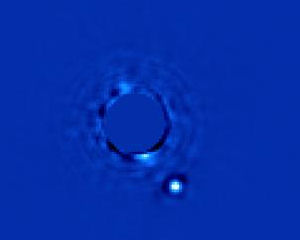


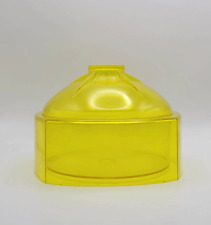
Comments are closed.